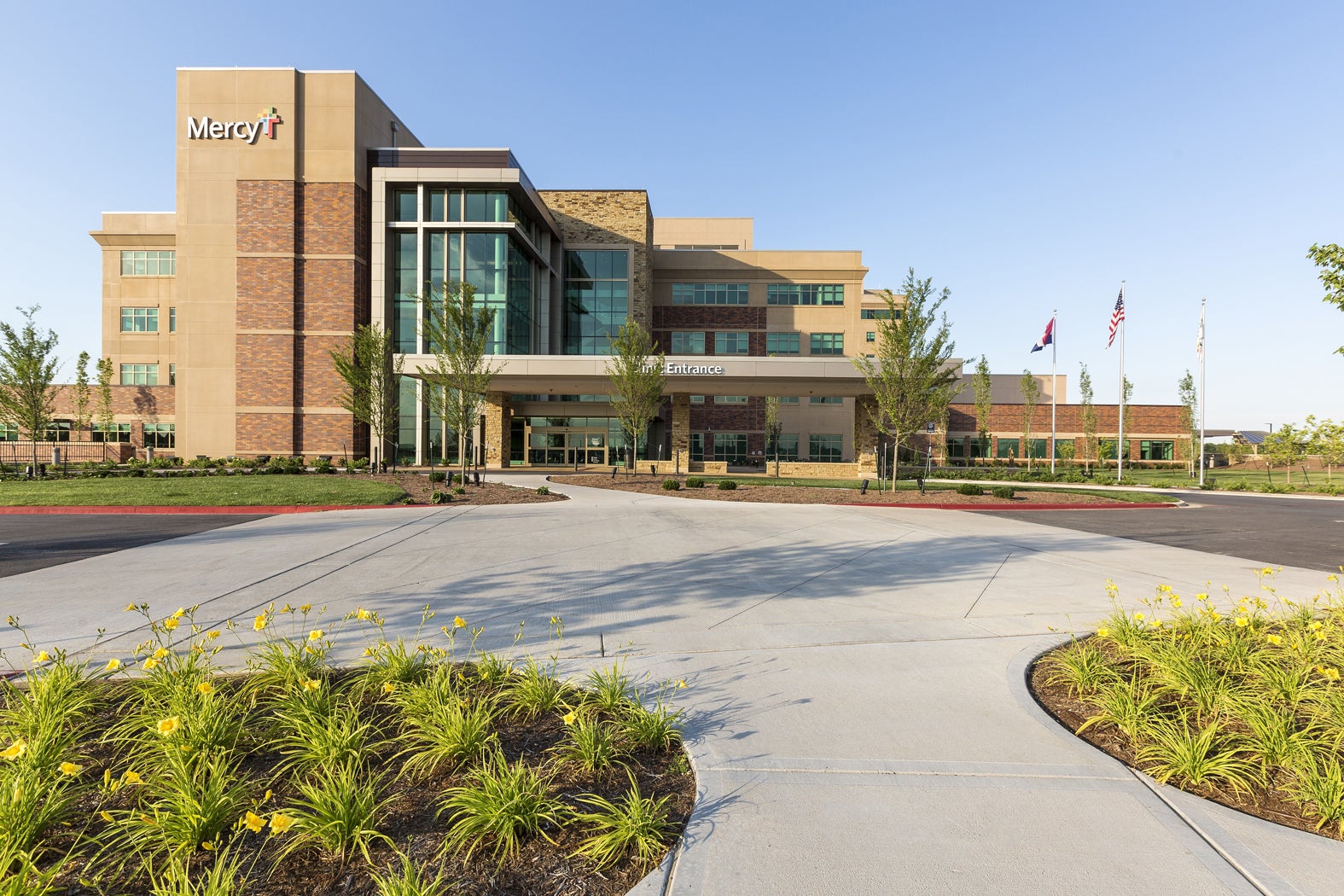Mercy Hospital Joplin
Mercy Hospital Joplin (Mo.) stood out as a team that exemplified the goals described by Vista Awards Chair Dana E. Swenson, PE, MBA, SASHE, as encompassing the larger organization, stakeholders and the community.
The hospital opened in March 2015 after a tornado in May 2011 left both the hospital and its facilities in turmoil. John Farnen, executive director of special projects for Mercy, says the team worked together to minimize the impact on the community and reconstruct a state-of-the-art facility within four years.
“The existing facility, when it was hit by the tornado, was just devastated,” he says. “It blew out all the windows, it blew off roofs, the inside partitions were all blown in. There was a lot of damage at that facility and the Mercy staff there just did a remarkable job protecting the patients from getting injured from the event.”
The EF-5 tornado ripped through Joplin, destroying St. John’s Regional Medical Center. Hours after the tornado, the realization that the community needed a functional working facility loomed. HKS and McCarthy were contacted for the rebuilding, which began immediately. The goal was to create a 208-bed, 890,000-square-foot hospital.
“To be recognized by them on this project is a wonderful event; the team is just thrilled about getting the award,” Farnen says. “It was a long four years to get through that project. It really brought together hundreds of people to complete this project.”

PROJECT INFO
- SQUARE FEET: 890,000
- NUMBER OF BEDS: 208
- PROJECT BUDGET: $345 million
- ACTUAL COST: $344.1 million
- START DATE: January 2012
- PROJECTED COMPLETION DATE: February 2015
- ACTUAL COMPLETION DATE: January 2015
Team Members
- JOHN FARNEN, owner project director, Mercy, Chesterfield, Mo.
- NORMAN MORGAN, lead architect, HKS, Fort Worth, Texas
- RYAN FELTON, construction director, McCarthy Building Companies Inc., Leawood, Kan.
- TIM KOENIG,electrical engineering lead, Heideman Associates Inc., St. Louis
- TIM UNGER, structural engineering principal-in-charge, SSE Inc., St. Louis
- JARED RASMUSSEN, civil engineering lead, Olsson Associates, Springfield, Mo.
Farnen says that after the powerful destruction, the team decided it must build a facility that could withstand a tornado. The community needed a facility that could protect patients and community members, he adds.
Within a matter of 24 to 48 hours, a work plan was conceptualized, including a structure for all teams to work cohesively. “We had to [have] a plan to build this in the time we had,” says Norman Morgan, lead architect, HKS. “It’s not your typical interview process where you have time to put together your game plan over several weeks; we had just a couple of days.”
Though building time posed a struggle, the team expedited the construction and design to maximize the patient family experience. They spent hours meeting with patient care teams and conceptualized a communication strategy based on focus, creativity and transparency, reviewing building progress each month.
The focus of the building was to maintain Mercy standards and to maximize treating patients and designing patient rooms with functional style. The building is special because of the innovative design that secures patient safety in the event of a storm at equal magnitude.
“The part that I was so impressed by was the weekly calls we had. We started the week knowing exactly what had to be done for the week. We were all on the same page,” Morgan says. “The weekly huddles were extremely important and kept everyone on point. That was the biggest thing from a communications standpoint that made this work.”
Vista Awards Judge Randy Regier, AIA, says the hospital CEO referred to the team members as friends, which was notable in the application. The team efficiency and streamlined communications also contributed to their selection.
“What was evident to me in the story they told about that project is that this was a disaster they had to deal with,” he says. “Knowing they had to pull a team together quickly, there was no hesitation in team selection based upon previous team successes." Regier adds that every project has a story to tell but the inspiration that comes through of great teamwork to solve problems is notable.
“It wasn’t just about a building, it was rebuilding a whole community,” Morgan adds. The building gave the community a sense of hope, and to be a part of that is one of the project highlights of Morgan's career, he says.


